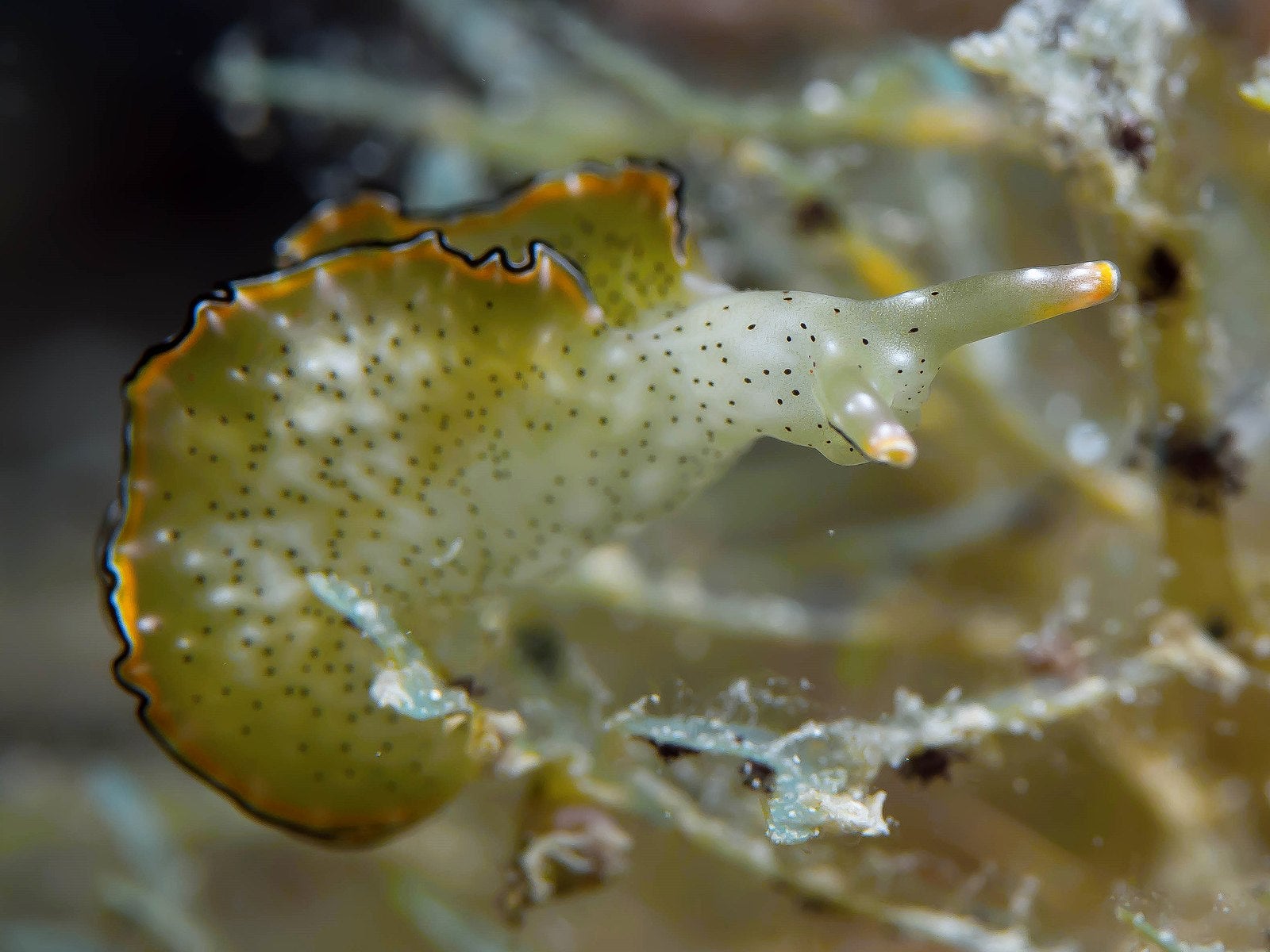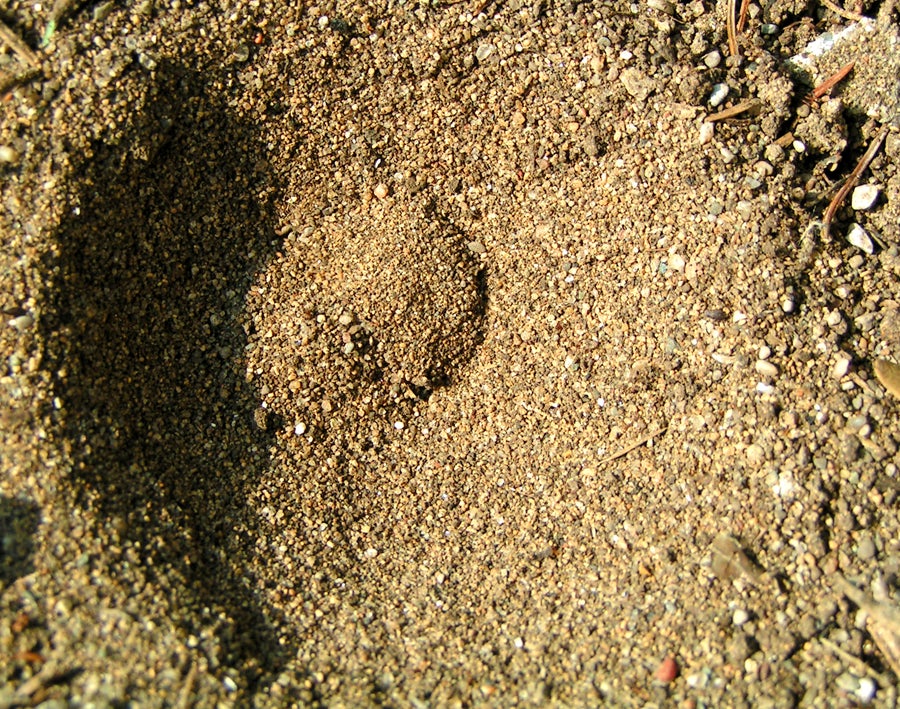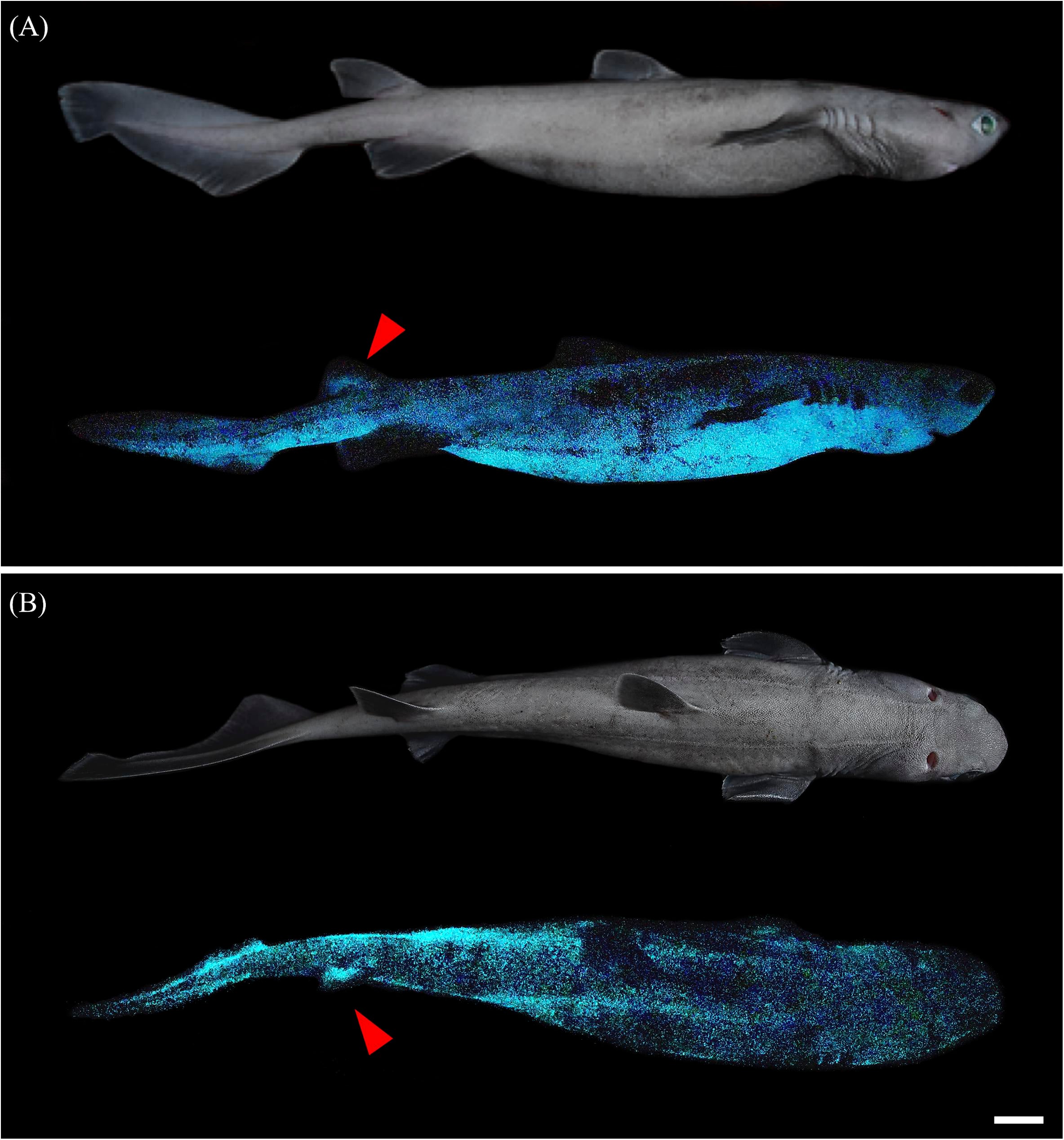Science news in brief: From self-beheading sea slugs to glowing sharks
And other stories from around the world

Your support helps us to tell the story
From reproductive rights to climate change to Big Tech, The Independent is on the ground when the story is developing. Whether it's investigating the financials of Elon Musk's pro-Trump PAC or producing our latest documentary, 'The A Word', which shines a light on the American women fighting for reproductive rights, we know how important it is to parse out the facts from the messaging.
At such a critical moment in US history, we need reporters on the ground. Your donation allows us to keep sending journalists to speak to both sides of the story.
The Independent is trusted by Americans across the entire political spectrum. And unlike many other quality news outlets, we choose not to lock Americans out of our reporting and analysis with paywalls. We believe quality journalism should be available to everyone, paid for by those who can afford it.
Your support makes all the difference.Meet the sea slugs that chop off their heads and grow new bodies
A few years ago, Sayaka Mitoh, a PhD candidate at Nara Women’s University in Japan, was perusing her lab’s vast collection of sea slugs when she stumbled upon a gruesome sight. One of the lab’s captive-raised sea slugs, an Elysia marginata, had somehow been decapitated.
Even more shocking, the severed head of the creature was moving around in the tank, munching algae as if there was nothing unusual about being a bodiless slug.
Mitoh also saw signs that the sea slug’s wound was self-inflicted: it was as if it had dissolved the tissue around its neck and ripped its own head off. Self-amputation, known as autotomy, isn’t uncommon in the animal kingdom. Having the ability to jettison a body part, such as a tail, helps many animals avoid predation. However, no animal had ever been observed ditching its entire body.
“I was really surprised and shocked to see the head moving,” says Mitoh, who studies the life history traits of sea slugs. She adds that she expected the slug “would die quickly without a heart and other important organs”. But it not only continued to live, it also regenerated the entirety of its lost body within three weeks.
Read More:
This prompted Mitoh and her colleagues to conduct a series of experiments aimed at figuring out how and why some sea slugs self-decapitate. The results of their experiments, published in early March in Current Biology, provide evidence that Elysia marginata, and a closely related species, Elysia atroviridis, purposefully do so in order to facilitate the growth of a new body. Although more research is needed, the researchers suspect these sea slugs ditch their bodies when they become infected with internal parasites.
“We’ve known for a long time that sea slugs have regenerative capabilities, but this really goes beyond what we had thought,” says Terry Gosliner, senior curator of invertebrate zoology at the California Academy of Sciences.
Gosliner, who has discovered over one-third of all sea slug species known to exist, suspects that the impressive regenerative capability of these sea slugs may relate to another impressive biological talent they possess.
Elysia marginata and Elysia atroviridis are often called “solar-powered sea slugs”. They are among a small number of slugs that can incorporate chloroplasts from the algae they eat into their bodies. This lets the slugs sustain themselves, at least partially, on the sugars the chloroplasts produce through photosynthesis.
Having this ability, which is known as kleptoplasty, could be what allows these sea slugs to survive long periods of time without their bodies.
— Annie Roth

If you look at your phone while walking, you’re an agent of chaos
At a pedestrian crossing during rush hour, you thread your way through the oncoming crowd, your eyes passing over the faces before you. It might feel like something you’re doing on your own. But scientists who study the movements of crowds have found that a simple trip through a crowd is much more like a dance we perform with those around us.
And so it might not come as too much of a surprise to learn that a person staring down at a phone, lost in a private world while walking, really messes with the vibe, according to a study published recently in the journal Science Advances.
Humans use a variety of visual cues to anticipate where other members of a crowd will go next, says Hisashi Murakami, a professor at Kyoto Institute of Technology and an author of the new paper. He was curious what would happen if attention to those details were disrupted, and so, in a series of outdoor experiments on the campus of the University of Tokyo, he and his colleagues filmed two groups of students on a path about 30 feet long.
The groups walked toward each other at a normal pace. When the groups met, the students intuitively performed a manoeuvre familiar to those who study crowds: they formed lanes. When a person at the front of one group found a way through the oncoming group, others fell in behind that person, creating several ribbons of walkers going past one another. This was effortless, and almost instantaneous.
The researchers then asked three of the students to perform a task on their phones while they walked — simple single-digit addition, not too taxing but enough to keep their gazes directed down instead of forward.
When those students were placed at the back of their group, the distraction did not affect how the groups moved past each other. But when the distracted walkers were at the front of the pack, there was a dramatic slowdown in the whole group’s walking pace. It also took longer for clear lanes to form.
The people who weren’t looking at their phones moved in a more choppy fashion than they did when there were no phone-gazers. It appeared that a few people not giving their full attention to navigation could change the behaviour of the whole crowd of more than 50 people.
As more and more people use smartphones and other devices that contribute to distracted walking, it may be necessary for architects and city planners concerned with the movement of crowds to take that altered behavior into account, the researchers say.
— Veronique Greenwood

The power of playing dead
Antlion larvae are famously ferocious: they dig pits in the sand to catch unsuspecting prey, stab it with their sharp mandibles and digest it from the inside out.
But everything is relative. To their own predators, antlion larvae are simply little snacks. And a colony’s cunning traps, grouped together and quite visible in the sand, are like flashing neon signs.
Rather than muster an active defence, the larvae have weaponised passivity – responding to provocation by lying totally still, for unpredictable intervals of time that can range from seconds to over an hour.
In a paper published recently in Biology Letters, researchers model how this behaviour may give antlions a leg up against impatient predators – and in the process shed new light on playing dead, a widespread behaviour whose effectiveness has been mysterious to researchers.
Nigel Franks and Ana Sendova-Franks, married biologists at the University of Bristol, have been studying insects together for over 30 years. In 2016, during an unrelated investigation into antlion larvae, they decided to weigh some of them. “I thought it was going to be a nightmare” of impatient bugs, Franks says. Instead, when tipped on to the scale, the larvae quickly froze.
The researchers took out their stopwatches. Under their gaze, one larva remained motionless for 61 minutes. “Watching paint dry would have been fun by comparison,” Franks says. “But it was so incredibly impressive.”
Many animals behave similarly when faced with danger. Larger vertebrates, like opossums, may emit bad smells to enhance the illusion that they are dead, and thus not tasty.
But with some creatures, like antlion larvae — eaten by animals, like birds, that are attuned to movement — the key may not be fake putridity, but stillness, says Franks, who for this reason prefers the term “post-contact immobility”. Perhaps they’re not playing dead, but hiding in plain sight.
On their next research trip, the researchers recorded the length of time that all antlions from a population played dead, and found it to be extremely variable, even when the same larva was tested twice.
Such fickleness could be part of the survival strategy. If the downtime of a given antlion larva was predictable, predators “could perhaps learn some patterns”, Sendova-Franks says. But if there is no pattern – and more food is nearby – a predator might just move on.
To test this idea, the two biologists and their colleague Alan Worley simulated a hypothetical antlion community menaced by a bird.
After running the simulation thousands of times, the researchers found that “playing possum” indeed helped the antlions: it increased the survival rate in a given patch by about 20 per cent.
— Cara Giaimo

Largest glowing shark species discovered near New Zealand
As they prowl the oceans, sharks aren’t just hunting. Some of them are glowing. And now researchers have identified the largest glow-in-the-dark species with a spine — on land or sea — that has ever been found.
A study published recently in Frontiers in Marine Science established that kitefin sharks — a species that grows to almost six feet in length — emit blue-green light. The scientists who led the month-long expedition in waters off the coast of New Zealand also expanded the scientific understanding of what makes several species of tiny, deep-swimming lantern sharks glow.
The study was led by Jerome Mallefet at the Catholic University of Louvain in Belgium, a scientist who has built his career studying bioluminescent marine life. His recent collaboration with researchers there and at the National Institute of Water and Atmospheric Research in Wellington, New Zealand, piggybacked on an annual survey conducted off the New Zealand coast. That project trawled depths as far down as 2,600 feet to document numbers of hoki, a white-fleshed fish that supports New Zealand’s largest commercial fishery.
As the survey netted fish, Mallefet and colleagues would scan the catch for sharks, which were able to survive the drastic pressure change because of their lack of swim bladders. Live sharks were transferred to tanks in a dark, cold room where the team photographed them, including the kitefin shark’s spectacular luminosity. Once photographed alive, specimens of the three shark species were euthanised, with samples of skin dissected, allowing the researchers to examine their flashlight-like luminous organs.
Tiny lantern sharks were already known to be luminous tricksters. Blue-green bioluminescent organs on their belly help them blend in with bluish light from above, so they can avoid detection by larger predators while possibly illuminating shrimp and squid on the sea floor – their dinner table. A glowing undercarriage also advertises reproductive organs to mates. Mallefet calls lantern sharks MacGyvers of light because they use their bioluminescence in so many ways.
Read More:
He had previously discovered that the organs that produce light in sharks are not controlled by their nervous systems, in contrast with many other bioluminescent organisms. Instead, chemical tests showed that shark light is regulated by the hormone melatonin.
“It makes us fall asleep,” Mallefet says, “but it’s lighting up the shark.”
Testing melatonin and other hormones on lantern shark and kitefin shark skin samples during the survey, his team confirmed that melatonin activates their bioluminescence, while other hormones turn it off, though yet more untested hormones may also contribute. What triggers the action and control of these hormones has yet to be deciphered.
— Lesley Evans Ogden
© The New York Times
Join our commenting forum
Join thought-provoking conversations, follow other Independent readers and see their replies
Comments